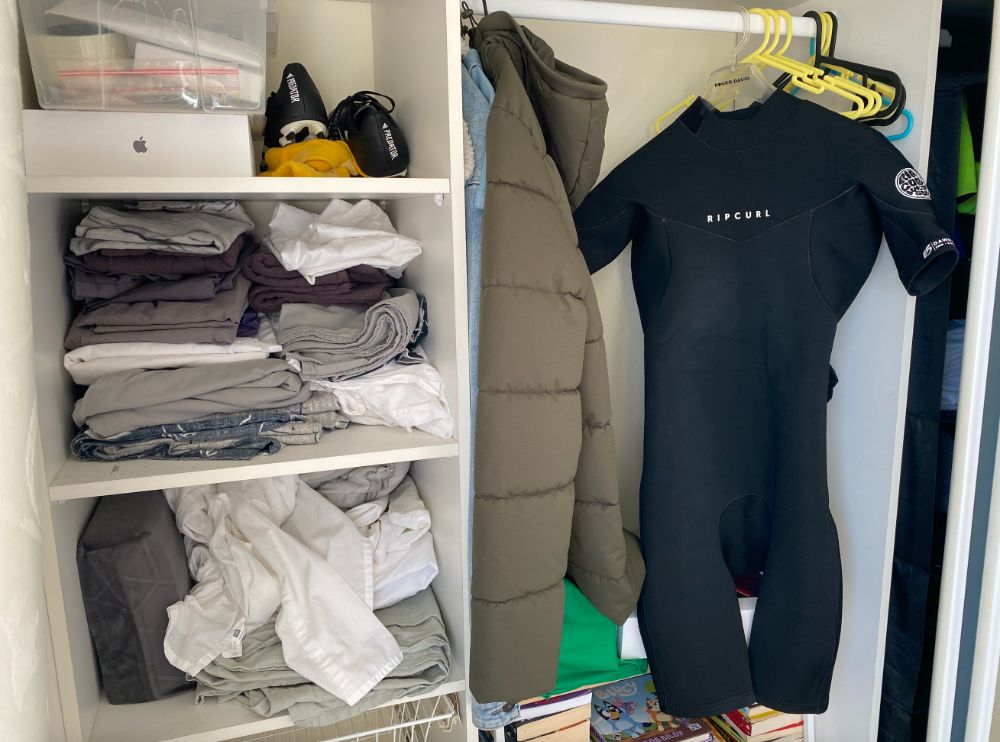Wetsuits come in various thicknesses, and if your thinner summer wetsuit isn't suitable for the chilly winter water then you'll want to store it away for the season in a way that preserves it so it's ready to go when the water warms up again.
I've recently had to admit that yes, the water is too cold for my short sleeve spring suit so I need to put it away for a few months.
But what are the best ways to store your wetsuit for the winter?
Here’s how to store a wetsuit for the winter:
- Ensure that your wetsuit is completely dry
- Store the wetsuit in a cool and dry place
- Hang your wetsuit
- Store your wetsuit flat
- Fold the wetsuit carefully
- Roll the wetsuit
- Put your wetsuit in a plastic bag
This article will discuss various ways to store a wetsuit for the winter and the pros and cons.
First, Ensure That Your Wetsuit Is Completely Dry
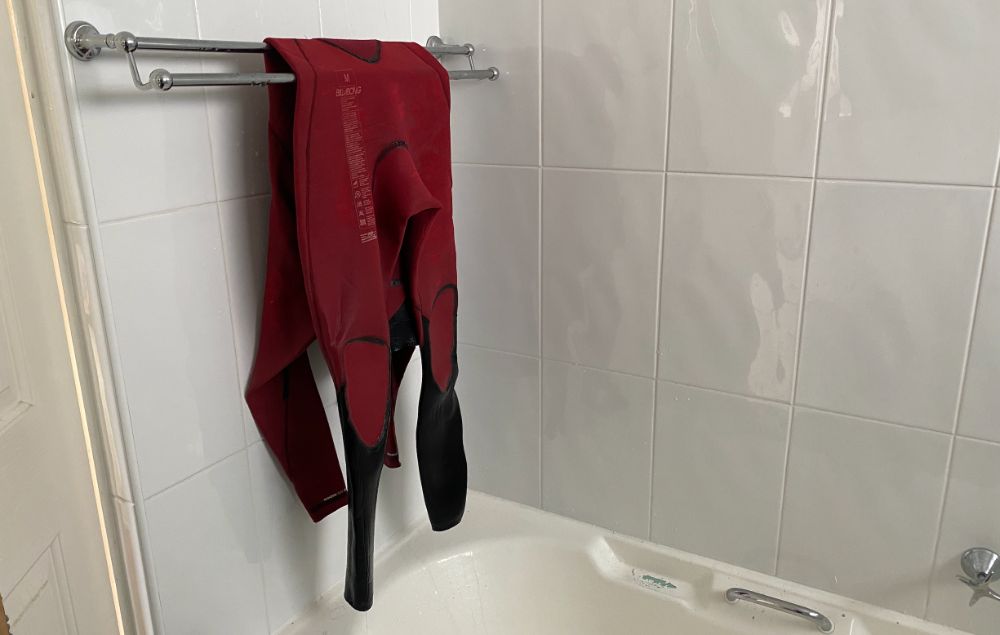
After using your wetsuit for the last time before the winter, rinse it with plain water to remove any salt water residue or chlorine. Avoid using hot water or detergents as these can damage the neoprene. If your wetsuit is dirty and needs cleaning, use one of these wetsuit shampoos or a homemade wetsuit cleaner alternative.
Allow your wetsuit to dry naturally, completely, and away from direct sunlight, which can damage the neoprene material. To ensure that both sides dry thoroughly, turn the wetsuit inside out once the outside has dried.
Before your put your wetsuit away for the winter you want to make sure that it's BONE DRY. Make sure it’s completely dry before storage to prevent mold and bad odors from forming.
Hang your wetsuit over a smooth, broad, and rounded surface when it’s drying to prevent stretching or creasing. I like to use the towel rack in my bathroom and hang my wetsuit over 2 of the racks at once to spread out the weight and create more airflow.
To quickly dry your wetsuit you could consider investing into a wetsuit dryer or if you don't want to do that and it's quite damp then check out these tips for drying a wetsuit overnight guaranteed.
Make Sure To Always Store Your Wetsuit in a Cool and Dry Place
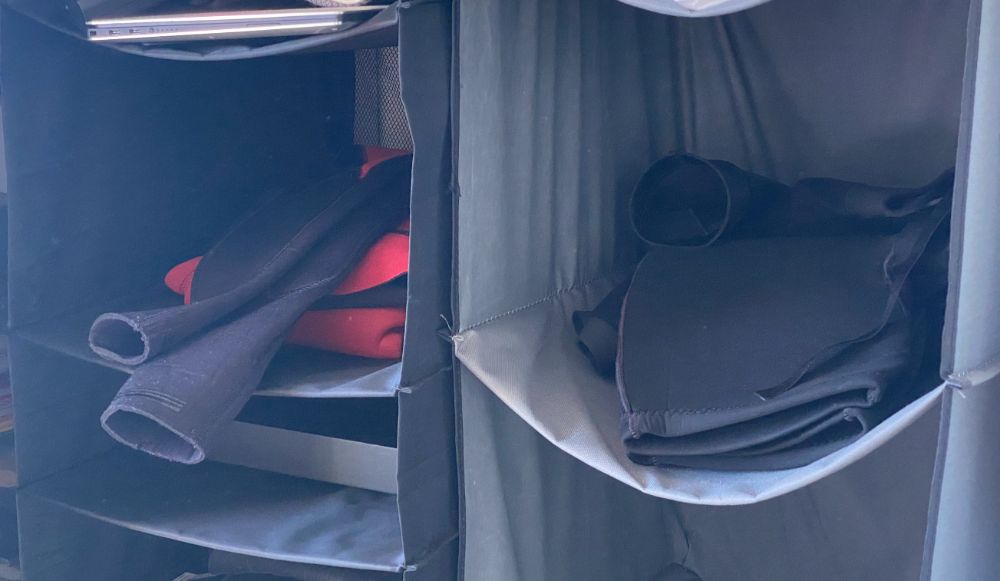
After your wetsuit has dried, you’ll need to find a suitable storage place. A cool and dry place is vital because heat can ruin the neoprene, causing it to lose its thermal properties.
Storing your wetsuit in a humid place isn’t advisable as the air’s moisture can promote mold and fungus growth.
Below are some excellent suggestions:
- Basement
- Garage
- Clothes closet
I personally store mine in my clothes closet of above my clothes closet. It makes it easy to find when the water warms up again and I want to use it for a surf.
Now let's have a look at the different options for storing your wetsuit for the winter.
1. Hang Your Wetsuit
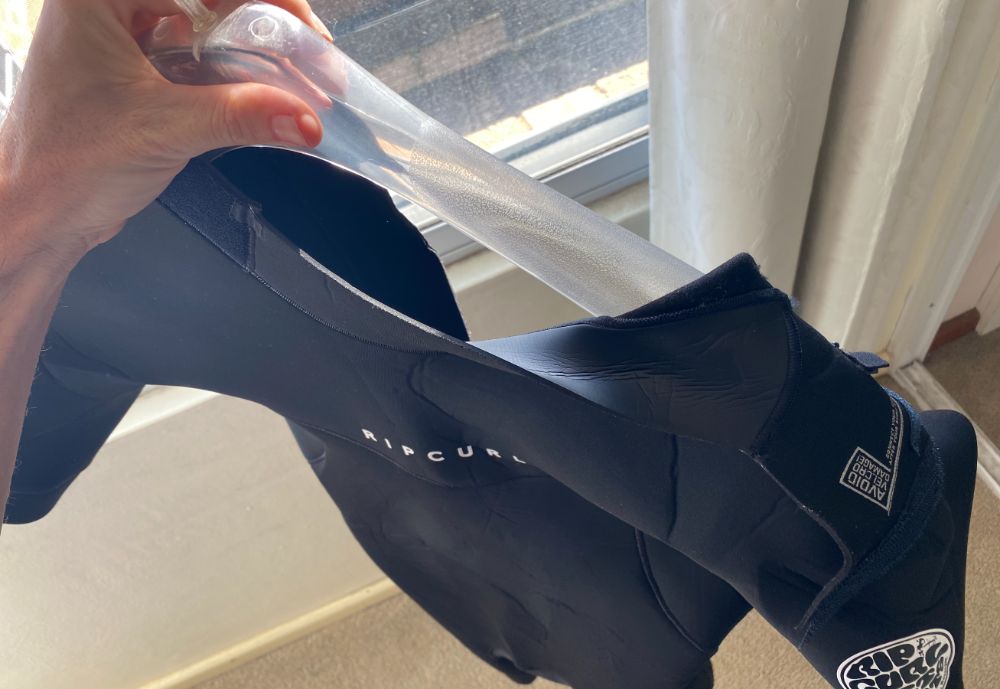
Hanging a wetsuit for the winter is a popular storage method and most manufacturers recommend it. This can be an ideal solution as it won't create any creases in your wetsuit, keeping it in pristine condition for when you want to wear it again.
If you choose this method, select a wetsuit hanger, or one with wide shoulders. Thin wire hangers can place too much stress on the wetsuit’s shoulders and cause creasing. It can sometimes cause the neoprene to become ineffective.
A wetsuit hanger will also allow airflow into the wetsuit which means it'll easily dry out if you didn't dry it properly before putting it away.
Check out my list of the best wetsuit hangers on the market but if you're just looking for a cheap and portable option then the Ho Stevie is a good wetsuit hanger with wide shoulders that folds away for travel or storage when not in use.
See the latest price of the Ho Stevie Wetsuit Hanger at Amazon
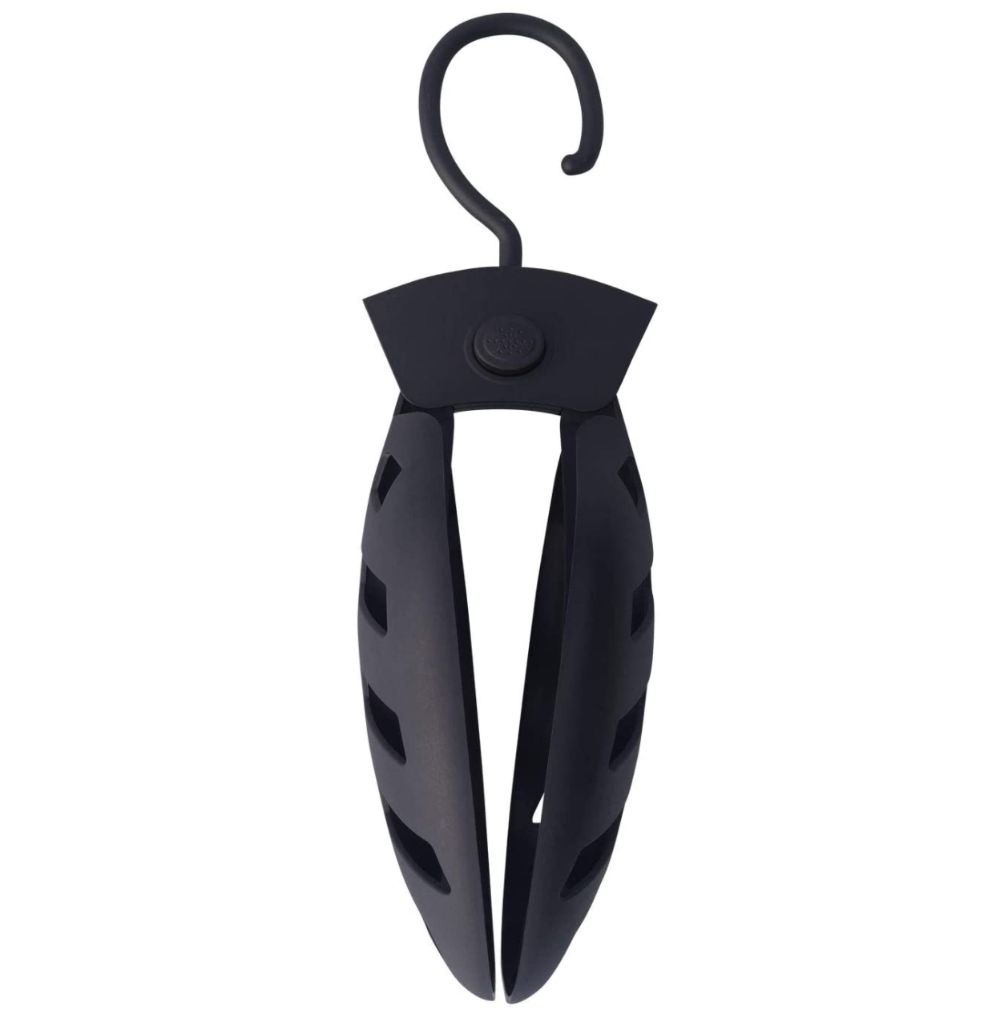
Pros
- Allows ventilation inside the wetsuit. The wetsuit’s hanger creates a gap to promote airflow into the wetsuit, which helps prevent bacteria build-up and mold formation.
- Most wetsuit manufacturers recommend hanging. If you visit a store selling good-quality wetsuits, you’ll notice that they’re hanging up.
- It won't crease your wetsuit. No folds means no creases so your wetsuit will be kept in great condition.
Cons
- Certain hangers can stretch the wetsuit’s shoulder area. If you use a wire hanger or a thin one, it can stretch the shoulder area in your wetsuit. If you’re in doubt, it’s best to invest in a wetsuit hanger.
- Wetsuit hangers can be expensive. To ensure that your wetsuit retains its original shape, you need to invest in a special wetsuit hanger, which can be costly.
2. Store Your Wetsuit Flat

If space isn’t an issue and you can store your wetsuit flat, this is an excellent option as you can maintain the suit’s original shape. As long as you have a large, flat surface in a cool and dry place, your wetsuit will do fine throughout the winter.
Don’t fold the wetsuit; allow the arms and legs to extend outward. Also make sure you don't put heavy items on top of the wetsuit as the weight and pressure can cause localized damage to the neoprene.
If you want to protect your wetsuit even further putting it inside a wetsuit bag (like a tuxedo bag but for wetsuits) will allow you to lie it flat but also protect it from dust and external elements. Click here for a list of the best wetsuit bags.
Pros
- Eliminates creasing and maintains shape. Since you’re not folding the wetsuit, there is no risk of it creasing or accidentally stretching the neoprene material.
- Wetsuit is within easy reach. Storing your wetsuit flat means that it’s easily accessible when you need it.
Cons
- Takes up a lot of space. Most people don’t have enough space in their homes to store a wetsuit flat. You’ll need a large, flat surface.
- Need to select the location carefully. It can be challenging to find a cool and dry place that also has a large, flat surface.
3. Fold The Wetsuit Carefully
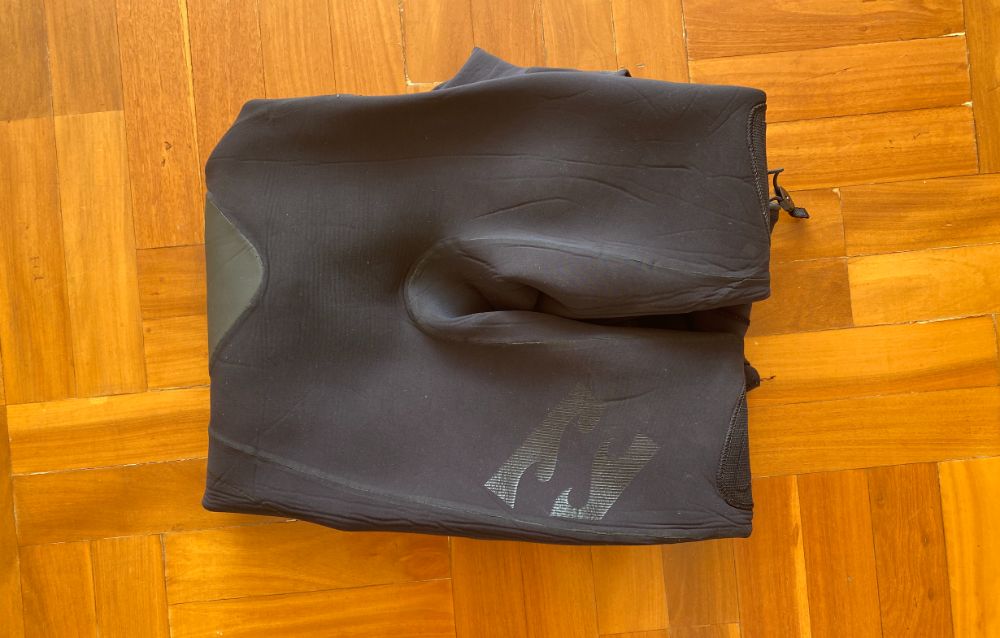
If you need to pack your wetsuit away for the winter, and you don’t have a wetsuit hanger or the space to fold it flat, folding it carefully is your best option.
To do this, gently fold the arms so that they cross over, and do the same with the legs. If you need to fold it compactly, gently fold the wetsuit at the waist. Click here for a full guide on exactly how to fold your wetsuit.
Folding a wetsuit can promote mold and bacteria build-up inside so you may consider turning it inside out every few weeks. But if your wetsuit is bone dry before you fold it then it should be fine.
Pros
- Spacesaver. Folding up your wetsuit is a compact way of storing it.
- Multiple storage places available. Whether you store your folded wetsuit in your basement, garage, or closet, there are many storage options.
Cons
- Can make your wetsuit crease. If you choose to fold your wetsuit carefully for the winter, you need to exercise caution.
4. Roll The Wetsuit
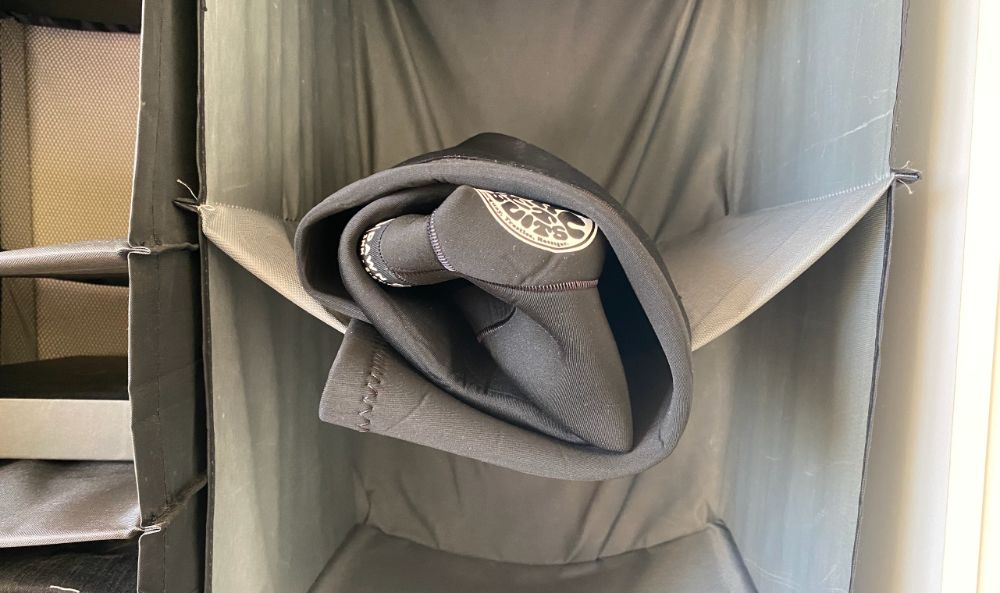
Rolling a wetsuit is the most convenient way of storing one but you need to do it correctly to prevent creasing or mold build-up.
When rolling it up, do it as loosely as possible so that you don’t stretch or crease the material, and you promote air circulation.
Pros
- Takes up very little space. If you live in a small apartment, space will be at a premium, and rolling your wetsuit will take up very little space.
- Unlikely to cause creases. As long as you roll up your wetsuit carefully with sufficient air circulation it’s unlikely to crease.
Cons
- Can promote mold or bacteria build-up. If you don’t store your rolled-up wetsuit in a cool and dry place, mold or bacteria can grow.
5. Put Your Wetsuit In A Plastic Bag
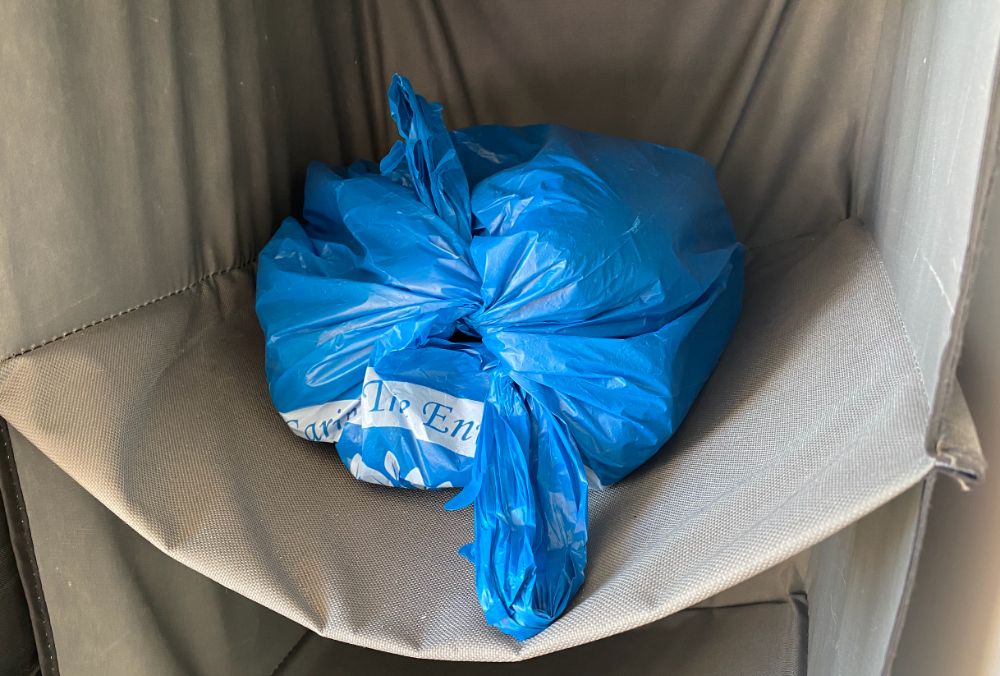
Whether you fold your wetsuit or roll it up an extra step you can take is to put the wetsuit inside a plastic bag for long term storage.
This will protect it from dust and exposure to the air helping it last longer. You can even use a vacuum seal bag if you have access to one of those devices.
If you don't want to use a bag then you can put your wetsuit in a plastic storage box and keep it away from the elements that way.
Pros
- Protects wetsuit from elements. Putting your wetsuit in a plastic bag protects it from dust and moisture on the outside and allows you to store it in less than ideal places.
Cons
- Doesn't allow moisture to escape. If you didn't dry your wetsuit properly then the moisture will be trapped and this can lead to mold.
- Change of creasing. Because your wetsuit is folded or rolled up in a bag it may get creased.
Conclusion
Once you’re finished with your summer wetsuit and need to store it for the winter, you’ve various options available:
- Hanging
- Storing it flat
- Folding it carefully
- Rolling it
- Putting it in a plastic bag
The method you choose usually depends on how much storage space you have available, and if you’re prepared to buy a wetsuit hanger or not.

